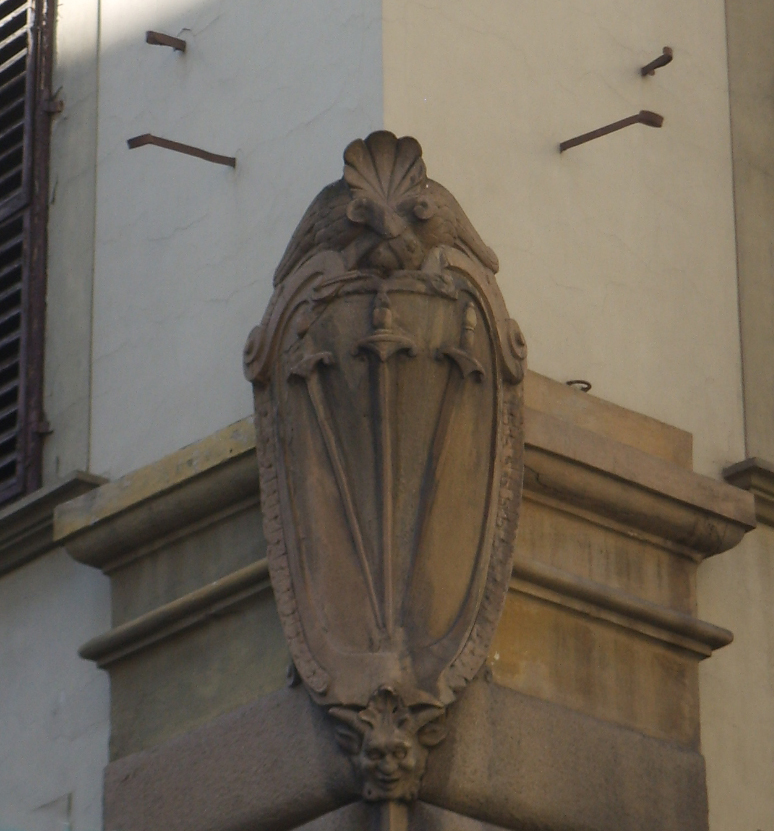Palazzo Minerbetti, Florence on:
[Wikipedia]
[Google]
[Amazon]

 The Palazzo Minerbetti is an urban palace building located on
The Palazzo Minerbetti is an urban palace building located on
I palazzi
Volume 2, by Sandra Carlini, Lara Mercanti, Giovanni Straffi, Alinea editrice, Florence (2004); page 72.
Via de Tornabuoni
Via de' Tornabuoni, or Via Tornabuoni, is a street at the center of Florence, Italy, that goes from Antinori square to ponte Santa Trinita, across Santa Trinita square, distinguished by the presence of fashion boutiques.
The street houses high f ...
#3 at the corner with Via del Parione, which edges into the Piazza Santa Trinita, Florence
Santa Trinita (; Italian for "Holy Trinity") is a Roman Catholic church located in front of the piazza of the same name, traversed by Via de' Tornabuoni, in central Florence, region of Tuscany, Italy. It is the mother church of the Vallumbrosan ...
, in central Florence
Florence ( ; it, Firenze ) is a city in Central Italy and the capital city of the Tuscany region. It is the most populated city in Tuscany, with 383,083 inhabitants in 2016, and over 1,520,000 in its metropolitan area.Bilancio demografico an ...
, region of Tuscany
Tuscany ( ; it, Toscana ) is a Regions of Italy, region in central Italy with an area of about and a population of about 3.8 million inhabitants. The regional capital is Florence (''Firenze'').
Tuscany is known for its landscapes, history, art ...
, Italy.
History
The palace is an assembly of palaces from the 12th and 13th centuries, joined under one family in the 15th century. The corner of the building on Via del Parione has a family heraldic shield. There are two quoted traditions for the derivation of the Minerbetti, one claims that it derives from a cadet or minor branch of an English Becket family, emigrating prior to the 15th century, perhaps related to the family SaintThomas Becket
Thomas Becket (), also known as Saint Thomas of Canterbury, Thomas of London and later Thomas à Becket (21 December 1119 or 1120 – 29 December 1170), was an English nobleman who served as Lord Chancellor from 1155 to 1162, and then ...
of Canterbury, leading to an italianizations of ''Minor-Becket''.
That tradition, however, may be apocryphal; other sources cite this as an ancient republican Florentine family. In 1459, Andrea Minerbetti bought the property from the Bombeni family. The Minerbetti were prominent into the 18th-century, hosting the Grand-Duke of Tuscany with pomp in 1767; by the 1800s, the male line had died. The palace was inherited or sold to the Santini family, then the Buovisi Montecatini of Lucca.
An inn was present at the locale since the 19th century; first, one called ''Locanda del Pellicano'' and later ''Locanda d'Europa''. The top floors house the pension Tornabuoni Beacci with a rooftop terrace with a view.
Structure
The lower floor of the main facade on Via Tornabuoni has rounded arches and slightly polished stone masonry of varying size. The thin corner building with an iron balcony along Via Parione was completed in the 19th-century and connected parts of the palace. Construction of this terrace and a grand staircase was begun in 1730. In 1761, a chapel was added by Pier Giovanni Fabbroni; was decorated with frescoes and had an altarpiece of ''Martyrdom of San Tommaso (Thomas Becket
Thomas Becket (), also known as Saint Thomas of Canterbury, Thomas of London and later Thomas à Becket (21 December 1119 or 1120 – 29 December 1170), was an English nobleman who served as Lord Chancellor from 1155 to 1162, and then ...
)'' by Giacinto Fabbroni.Volume 2, by Sandra Carlini, Lara Mercanti, Giovanni Straffi, Alinea editrice, Florence (2004); page 72.
References
{{Coord, 43.7704, N, 11.2512, E, source:wikidata, display=title Renaissance architecture in Florence Minerbetti Houses completed in the 14th century